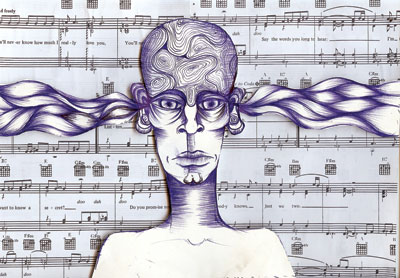All Nonfiction
- Bullying
- Books
- Academic
- Author Interviews
- Celebrity interviews
- College Articles
- College Essays
- Educator of the Year
- Heroes
- Interviews
- Memoir
- Personal Experience
- Sports
- Travel & Culture
All Opinions
- Bullying
- Current Events / Politics
- Discrimination
- Drugs / Alcohol / Smoking
- Entertainment / Celebrities
- Environment
- Love / Relationships
- Movies / Music / TV
- Pop Culture / Trends
- School / College
- Social Issues / Civics
- Spirituality / Religion
- Sports / Hobbies
All Hot Topics
- Bullying
- Community Service
- Environment
- Health
- Letters to the Editor
- Pride & Prejudice
- What Matters
- Back
Summer Guide
- Program Links
- Program Reviews
- Back
College Guide
- College Links
- College Reviews
- College Essays
- College Articles
- Back
Awakenings
In the 1990 movie Awakenings, audiences get an inside view of the goings on at a hospital with catatonic patients. In this paper I will be discussing the conditions of the hospital, the relationships between the people who worked there and the residents of the hospital, their attitude toward Dr, Sayer, and the staff's attitude toward each other. I will also be discussing the symptons and treatment of the patient's disease and how this movie relates to what we have studied so far in chapter 2.
Although the condtions in the hospital were sanitary and well kept, it was much more of a prison with its countess barred windows and locked doors. Also, the whole hospital seemed darker than it should have been. In other movies, hospitals are usually brighter. I feel that this sets the mood for the atmosphere of the entire building. The staff seemed uninterested in the patients, even getting annoyed when they were called to assist them. The relationship between the staff was cordial, not exactly friendly. With Dr. Sayer they were dismissing and even rude. They were reluctant to listen to his ideas and they didn't think he would last very long because of his lack of experience. This was very obvious when he showed the doctors that the patients could indeed move.
The disease that the patients had showed symptoms very similar to Parkinson's disease. Almost all of the patients were previously diagnosed with encephalitis lethargic, seemed to be "frozen", and had reflex-like movements like catching a ball. Some were able to move after experienceing things like certain types of music or human contact. Leonard, however was the only one that hadn't had encephalitis lethargic, his symtoptoms showed up randomly. He had been a healthy boy of eleven until one day when his hand began experiencing extreme unsteadiness. Eventually he was unable to do anything for himself at all.
Dr. Sayer, who notices the resemblance to Parkinson's, decides to trear the patients with L-dopa. He tests the drug on Leonard. At first, it has no effect on him. As the dosages went higher, the better it worked, and Leonard recieved full ability to move with the dosage of 1000mg. Encouraged, Dr. Sayer held a meeting with people who could fund the nearly $1200 cost of the medicine. Also, the staff of the hospital donated their checks to the cause. This act showed the changing atmosphere and improving relationships between everyone at the hospital. With the help of everyone, Dr. Sayer was able to provide the rest of the patients with the drug and was given the same result. However, after some time, Leonard was exhibiting new symptoms such as paranoia, violent behavior, and excessive tics.
Awakenings was relevant to chapter 2 because it dealt with the neuraltransmitter Dopamine. Dopamine influences movement, attention. and learning. When someone doesn't have enough dopamine it can result in Parkinson's disease. Many have asked why they can't get get a shot of Dopamine and be cured. However, Dopamine is too large to fit into the Blood Brain Barrier so L-dopa is used. L-dopa is a dopamine-like dug that used to treat Parkinson's disease. However like Dopamine, too much L-dopa can result in schizophrenia. This explains why Leonard was experiencing those new symptopms.
After watching the movie I thought about how they portrayed the disease and its symptoms and treatments. I felt that they didn't do as much to explain what the disease does to someone and why it happens. The movie contradicted itself by saying basically saying that the patients were fully aware of what was going on around them and then Leonard explaining that he "felt nothing". The film mostly described the emotional impact of the patients' "awakening" and the change in relationships of the people inolved with hospital.

Similar Articles
JOIN THE DISCUSSION
This article has 0 comments.
